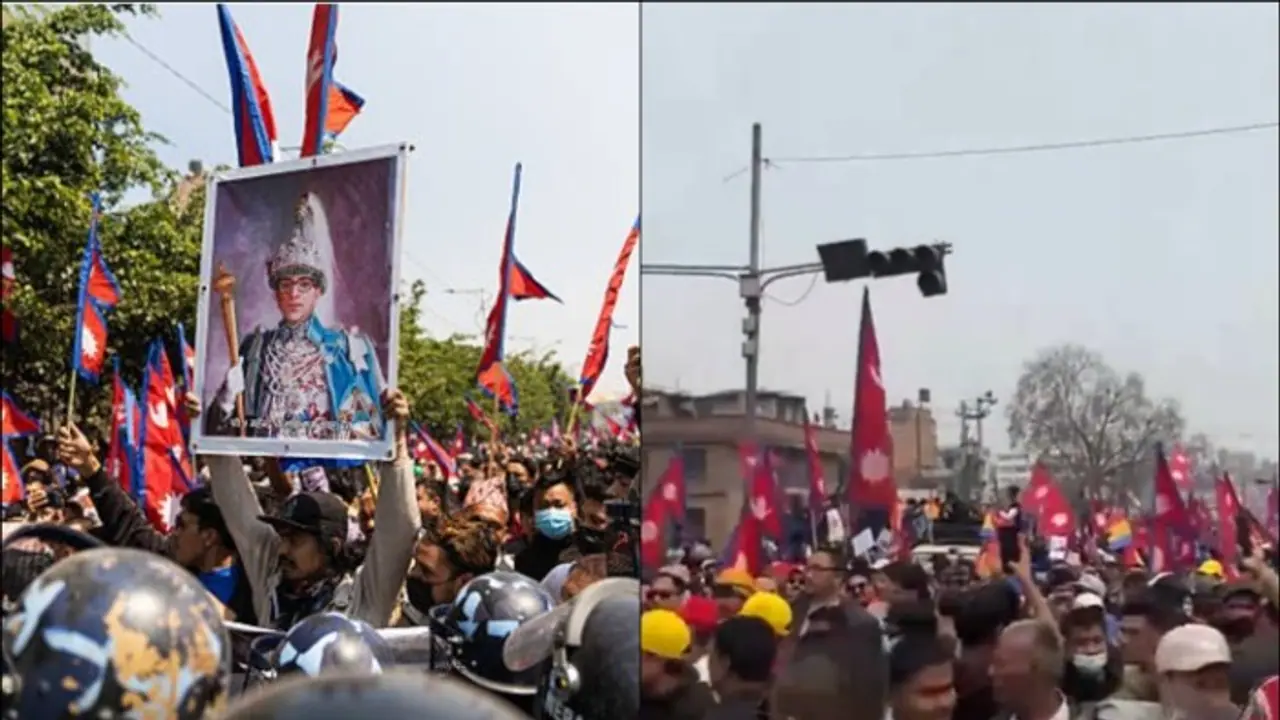Nepal witnesses intense pro-monarchy protests as Rastriya Prajatantra Party supporters demand the return of the king and Hindu Rashtra. Clashes with police, arrests, and public anger mark a pivotal moment in the nation’s politics.
A massive protest march was carried out in the heart of Nepal’s capital on Tuesday by the pro-monarchy Rastriya Prajatantra Party (RPP), renewing demands for the restoration of the monarchy and Hindu Rashtra.

The demonstration, led by senior RPP leaders, comes amid growing public discontent and follows earlier tensions in March, when party vice president Rabindra Mishra and general secretary Dhawal Shumsher Rana were arrested after violent clashes erupted between protesters and police.
Tuesday’s march underscored the rising momentum of the royalist movement as supporters flooded Kathmandu’s streets, chanting slogans and waving the traditional red flag with a cow symbol.
Also read: Crown Prince of Dubai begins first official visit to India, meets S Jaishankar (WATCH)
In recent weeks, Nepal has witnessed a surge in pro-monarchy demonstrations, with citizens taking to the streets to demand the reinstatement of the monarchy and the declaration of Nepal as a Hindu nation.
The Rastriya Prajatantra Party (RPP), a pro-monarchist political entity, has been at the forefront of these protests, reflecting a growing discontent with the current republican system.
Escalation of protests
The protests intensified on March 28, when a rally in Kathmandu's Tinkune area turned violent. Clashes between demonstrators and security forces resulted in two fatalities and over 100 injuries. The unrest also led to significant property damage, including attacks on media offices and political party buildings.
Arrests and legal actions
In the aftermath, authorities reportedly arrested several RPP leaders, including Vice-Chairman Rabindra Mishra and General Secretary Dhawal Shamsher Rana, charging them with treason. The Kathmandu District Court extended their remand for further investigation. Additionally, the government imposed a curfew in parts of Kathmandu to curb further violence.
Also read: PM Modi, Nepal PM Oli discuss energy, connectivity and BIMSTEC gains in Bangkok meet
The resurgence of pro-monarchy sentiments is rooted in public frustration over political instability and economic challenges since the monarchy's abolition in 2008. Nepal has seen frequent government changes, leading many to question the effectiveness of the current system. Swati Thapa, an RPP central committee member, stated that citizens desire the return of the king and the restoration of Nepal as a Hindu nation.
Government's response
Prime Minister KP Sharma Oli has vowed action against those responsible for the unrest, emphasizing the need to maintain order. The government faces the challenge of addressing the protesters' demands while ensuring political stability.
As the situation develops, the Nepalese government's approach to these protests will be crucial in determining the nation's political trajectory. The growing call for a return to monarchy and a Hindu state underscores the complexities of Nepal's evolving democratic landscape.
